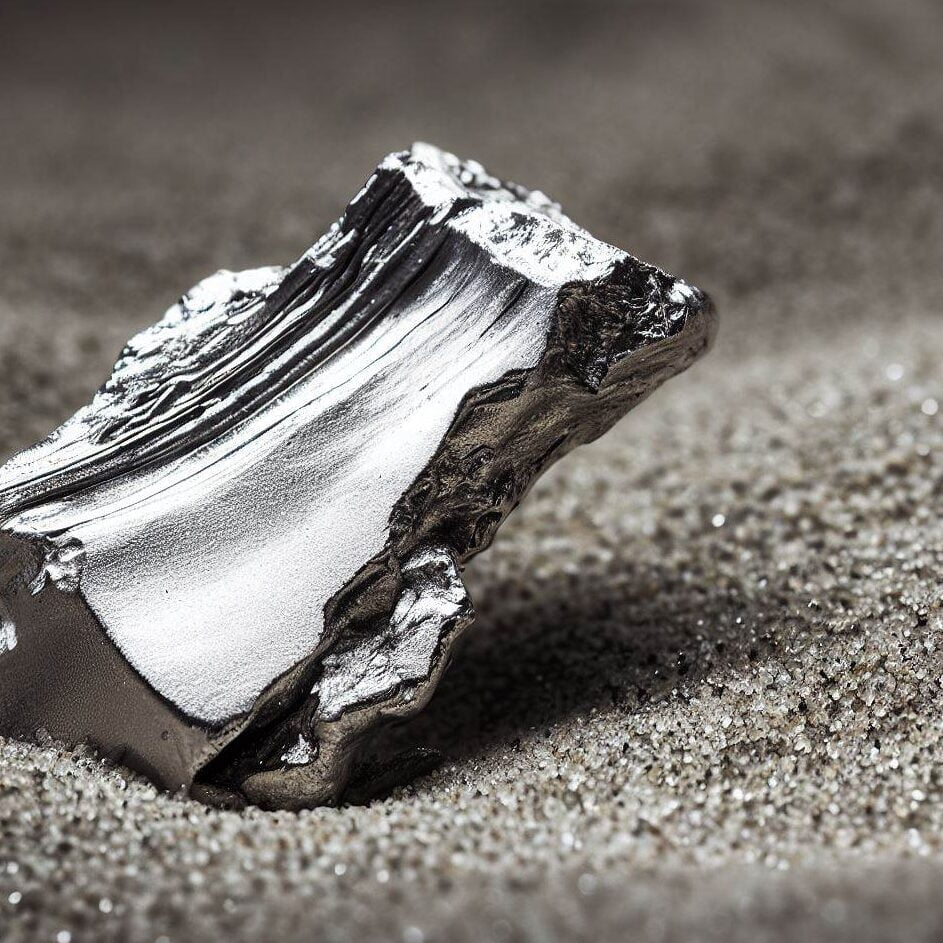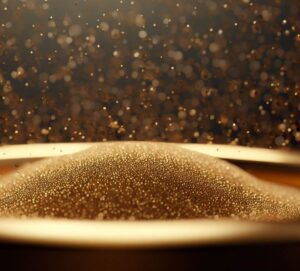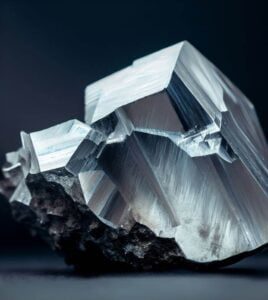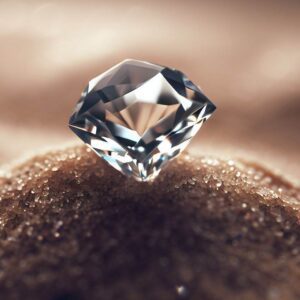Platinum
It is one of the rarest and most valuable metals in the world, found in very small quantities in nature.
One of the rarest and most valuable metals in the world
Platinum is a precious transition metal characterized by its bright silver color and high density. It is one of the rarest and most valuable metals in the world, found in very small quantities in nature.
Platinum is highly resistant to corrosion and oxidation, making it ideal for use in jewelry manufacturing, especially in the creation of engagement and wedding rings. It is also used in the automotive industry for catalytic converters, as well as in the production of medical devices, electronics, and the chemical industry.
Due to its rarity and unique properties, platinum is a highly valued and sought-after metal.
Platinum in Jewelry
Platinum is used to make high-quality and durable jewelry that retains its shine and natural white color without the need for coatings.
Platinum jewelry must carry a hallmark or stamp indicating its purity and origin. Usually, the numbers 950 or 900 are used, followed by the letters Pt, Platinum, or Platinum, to indicate that the jewelry is made of 95% or 90% pure platinum, respectively. These marks guarantee the quality and authenticity of the platinum jewelry to the consumer.
History of Platinum
Platinum was discovered in 1735 by the alchemist Antonio de Ulloa, who called it "metal blanco" (white metal). De Ulloa was sent by the Spanish king to America to oversee the production of silver and gold coins. However, even before that, platinum was already used by ancient Egyptians and indigenous peoples of South America, who mixed it with gold to make jewelry and ornaments. For example, a platinum hieroglyph was found in the Casket of Thebes, dating back to 1200 BCE.
Platinum was not recognized as a chemical element until 1751 when the Swedish scientist Theophil Scheffer successfully melted it and determined its properties. Platinum is a white-grayish precious transition metal that is heavy, malleable, and ductile. It has an atomic number of 78 and a symbol of Pt. It is resistant to corrosion and is found in various minerals, often in association with nickel and copper.
Platinum has been used for various purposes throughout history, such as decoration, laboratory instruments, electrical contacts, dental fillings, and automobile catalysts. It has also become a symbol of wealth and luxury, especially in jewelry.
Platinum is one of the rarest and most expensive metals in the world, due to its scarcity and high demand.
Manufacturing Platinum for Jewelry
The manufacturing of platinum for jewelry is a process that requires a lot of skill and precision since platinum is a very hard and resistant metal that needs high temperatures to melt and shape.
Platinum jewelry is made with 90-95% pure metal, making them hypoallergenic and very valuable. The rest of the alloy is usually composed of other platinum group metals, such as iridium or ruthenium, which provide more strength and hardness.
Platinum is mixed with these metals in a crucible and heated to about 1800°C to obtain a homogeneous liquid that is poured into a mold with the desired shape.
Once the metal has cooled and solidified, it is removed from the mold and subjected to a process of filing, polishing, and finishing to eliminate imperfections and give it the final appearance. Platinum jewelry may have gemstone settings, such as diamonds, which enhance their beauty and elegance. Platinum holds gemstones very well, as its prongs are very strong and do not deform or corrode.
Extraction of Platinum
Platinum has been mainly extracted from Colombia, Russia, Canada, and South Africa, with the latter being the world's largest producer today.
The extraction of platinum is a process that requires a lot of technology and resources since platinum is a very scarce and difficult-to-obtain metal. Platinum is found in a native state, in the form of nuggets or grains, or associated with other metals such as nickel, copper, and chromium.
There are two main methods for extracting platinum:
Wet Extraction of Platinum
The wet extraction of platinum is a hydrometallurgical process that involves leaching the ore with aqua regia to form platinum, palladium, and rhodium complexes. Then platinum is separated from the rest of the metals by adding ammonium chloride, which forms an insoluble precipitate with platinum. Palladium and rhodium remain in the solution and are refined separately.
Dry Extraction of Platinum
The dry extraction method of platinum is a process that involves melting the platinum ore with iron and lead or metallic lead, to separate platinum from impurities. This method was developed by Deville and Debra in 1841 and is based on the difference in solubility of platinum in lead and iron. The process can be summarized in the following steps:
- The platinum ore is crushed and mixed with metallic lead or a lead and antimony alloy.
- The mixture is heated in a furnace until the lead melts and dissolves the platinum, forming an alloy called a lead-platinum button.
- The lead-platinum button is separated from the slag containing insoluble impurities such as iron, chromium, and nickel.
- Iron is added to the lead-platinum button, and it is heated again so that the iron reacts with the lead and eliminates it, leaving an iron-platinum alloy.
- The iron-platinum alloy is separated from the slag containing oxidized lead and other platinum group metals such as palladium, rhodium, and iridium.
- The iron-platinum alloy is treated with concentrated sulfuric acid to dissolve the iron and leave pure platinum in powder form.
- This method has the advantage of being faster and more economical than the wet method, but it has the disadvantage of not recovering the other platinum group metals, which can have high commercial value. Moreover, it generates toxic waste that can pollute the environment.


Sandra Sanchez
Sandra is passionate about jewelry and interior design. She graduated in interior design from Universidad Taller 5 in Colombia and has completed several courses and postgraduate studies in Jewelry in Barcelona and Madrid, Spain. She combines her work as a jeweler and interior designer with teaching.


